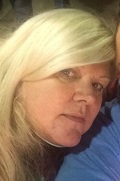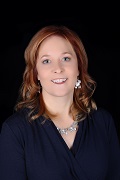What Makes a Good STEM Trade Book?
By Carrie Launius and Christine Anne Royce
Posted on 2020-01-13
This is a question a lot of people are asking.
Since 2016 NSTA has published the Best STEM Books a companion piece to the Outstanding Science Trade Books list.
While many groups have recommended STEM trade books for children, there has been no real consensus of the criteria necessary in a STEM trade book. Many STEM books are comprised of good science or math or engineering or technology books and are billed as “STEM.” But is it really STEM?
To truly define the criteria needed for a STEM book, we need to first agree loosely on a definition of STEM. One of the most repeated definitions of STEM is “STEM education is an interdisciplinary approach to learning where rigorous academic concepts are coupled with real-world lessons as students apply science, technology, engineering, and mathematics in contexts that make connections between school, community, work, and the global enterprise enabling the development of STEM literacy and with it the ability to compete in the new economy.” [1].
Generating a List of Characteristics
Determining what IS a STEM book might require us to begin with defining what a STEM book IS NOT. STEM Books do not:
- simply present facts or information;
- focus only on a single subject;
- present topics that exist in a vacuum; and
- fail to create connections to the real world.
Therefore, if we know what a STEM book is not, we can draw conclusions about what they are. STEM Books should:
- engage students in thinking about and using problem solving;
- integrate two or more of the STEM fields;
- present relevant and interconnected topics;
- make connections to the real world; and
- help students connect both content and practices or habits of mind used by STEM fields.
If we begin to generate a list of habits of mind and practices, we begin to see that many books identified as STEM books ask students to engage in creating knowledge from their experiences ranging from asking questions and gathering information to analyzing data.
We also begin to see that STEM books incorporate the habits of mind that emerge when engaging in a STEM field; teach resilience, grit, and determination; and assist students in understanding that failure may be part of the real-world STEM process. (For examples of books that meet these criteria, please see the table below.)
Ruzzi and Eckhoff incorporate two focus questions to evaluate children’s literature for STEM which relate to content that is technically sound and appropriate and can help to determine if the book effectively assists students in the development of both inquiry and content [2]. Recommendations and narrative descriptions of books that Ruzzi and Eckhoff use– most of which align with the science and engineering practices in the Next Generation Science Standards—include phrases such as “hypothesizing through close inspection;” “experimenting with;” “a true story about ingenuity, creativity, and persistence in the face of severe adversity;” and “design their own tools to measure height and distance;” The criteria utilized by the National Science Teaching Association Committee for Best STEM Books includes “modeling real-world innovation, illustrating teamwork, diverse skills, creativity, and cooperation, inviting divergent thinking and doing” (p. 93) among others. [3]
Ramirez asserts that “[c]reativity is the secret sauce to science, technology, engineering and math (STEM). It is a STEM virtue” (para 3). [4] Therefore, one could argue that STEM trade books need to describe creativity or develop creativity in students. According to the guidelines presented by the Children’s Book Council and the National Science Teaching Association, “STEM (Science, Technology, Engineering, and Mathematics) is an integrated and creative approach to discovering and applying knowledge about our world to solve problems that utilizes one or more of the content areas. Trade books that deliver background and model the practices of STEM provide context and inspiration to readers.” (Science & Children, 2018, p. 93).[3]
| Criteria for Books | Example Book |
|
Doll-3 1.0 |
|
Cao Chong Weighs an Elephant |
|
Spring After Spring |
|
Curiosity: The Story of a Mars Rover |
|
Doctor with an Eye for an Eye |
|
Solving the Puzzle Under the Sea: Marie Tharp Maps the Ocean Floor |
|
The Most Magnificent Thing |
|
Instructions Not Included: How a Team of Women Coded the Future |
|
Tick Toc Banneker’s Clock |
|
The Crayon Man |
References
[1]. Tsupros, N., Kohler, R., & Hallinen, J. (2009). STEM education: A project to identify the missing components, Intermediate Unit 1 and Carnegie Mellon, Pennsylvania.
[2]. Ruzzi,B. L., & Eckhoff, A. (2017). Growing in STEM: STEM resources and materials for engaging learning experiences. Young Children 72(1). Retrieved from https://www.naeyc.org/resources/pubs/yc/mar2017/stem-materials-experiences.
[3]. National Science Teachers Association. (2018). Best STEM books. Science and Children, 55(7), 87-94.
[4]. Ramirez, A. (2013). Creativity is the secret sauce in STEM. Retrieved from https://www.edutopia.org/blog/creativity-secret-sauce-in-stem-ainissa-ramirez.

Carrie Launius is Science Curriculum Specialist for St. Louis Public Schools in St. Louis, Missouri. She previously was the NSTA District XI Director and president of Science Teachers of Missouri (STOM). She believes using trade books to support science learning is essential for students. She was instrumental in developing and implementing the Best STEM Book Award for NSTA-Children’s Book Council. Her passion is supporting teachers and helping them grow professionally. She resides in St. Louis near her two grown children and with her son and four dogs.

Christine Anne Royce is the author of the Teaching Through Trade Books column in Science and Children which integrates children’s literature and science content lessons for grades K-5. She is also the coauthor of Teaching Science Through Trade Books and the Investigate and Connect Series. She is a professor of science/STEM education at Shippensburg University (PA) where she teaches both undergrad and graduate level methods classes. She is currently the retiring president for the National Science Teaching Association. Follow her @caroyce.
The mission of NSTA is to transform science education to benefit all through professional learning, partnerships, and advocacy.

